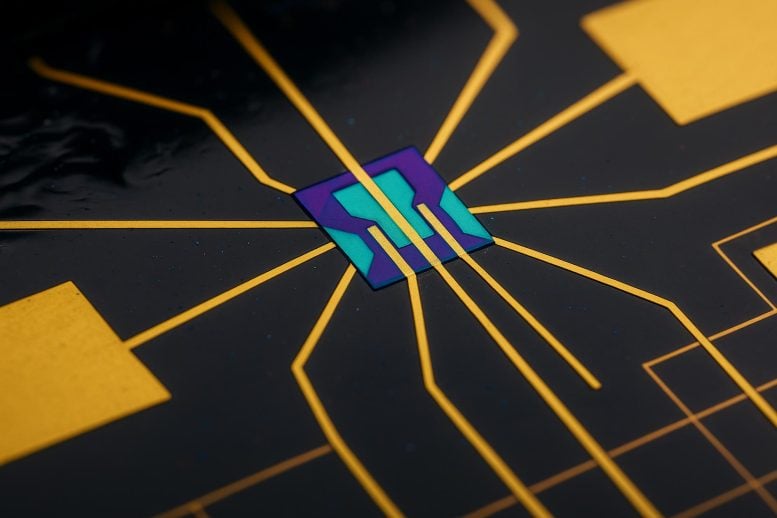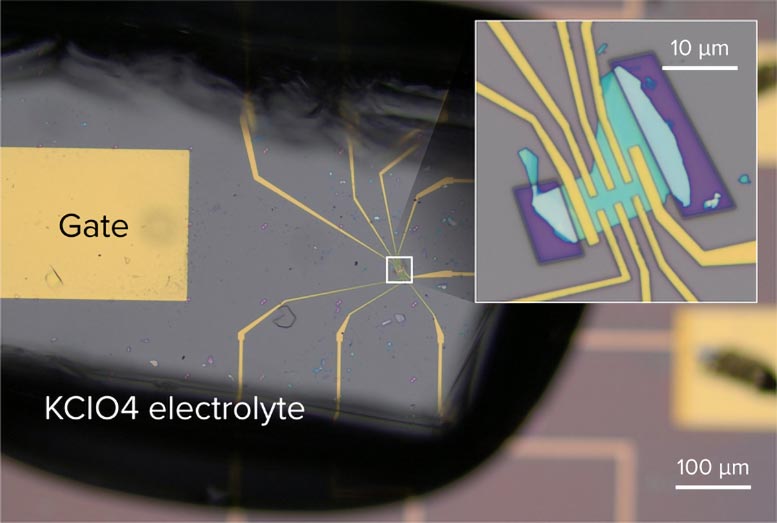
RIKEN scientists have discovered how to manipulate molybdenum disulfide into acting as a superconductor, metal, semiconductor, or insulator using a specialized transistor technique.
By inserting potassium ions and adjusting conditions, they could trigger dramatic changes in the material’s electronic state—unexpectedly even turning it into a superconductor or insulator. This new level of control over a single 2D material could unlock exciting breakthroughs in next-gen electronics and superconductivity research.
Unlocking Versatility in a Single Material
A team of physicists at RIKEN has developed a transistor-based technique that allows a single-layered material to take on a wide range of electronic behaviors, functioning as a superconductor, metal, semiconductor, or insulator. This approach could lead to the discovery of new superconducting materials.
“The variety of electronic properties based on a single material is highly intriguing to us from a materials science perspective,” says Yoshihiro Iwasa of the RIKEN Center for Emergent Matter Science, who led the study.
The material in question is molybdenum disulfide (MoS2), which can be isolated into atomically thin layers. Each layer consists of molybdenum atoms sandwiched between layers of sulfur atoms. Depending on how these sulfur atoms are arranged, MoS2 can exist in two different structural phases: the 2H phase, which behaves as a semiconductor, and the 1T phase, which acts like a metal.
“2H molybdenum disulfide is highly promising for use in next-generation semiconduc tor devices,” notes Iwasa.

Guiding Phase Shifts with Potassium Ions
To explore how the material shifts between phases, the researchers built a field-effect transistor and connected it to a sample of 2H-phase molybdenum disulfide. By adjusting the voltage applied to the transistor, they were able to control the insertion of potassium ions into the material with high precision.
As the potassium concentration increased, the material abruptly transitioned from the 2H phase to the 1T phase. This change occurred when there were approximately two potassium ions for every five molybdenum atoms, highlighting a clear link between ion concentration and phase behavior.
Triggering Superconductivity
Then, by inserting the right amount of potassium and cooling the sample to –268°C, the researchers found that the 1T phase became a superconductor.
Although superconductivity had previously been seen in the 2H phase, this was unexpected for the 1T phase, and it occurred at a different temperature. “The biggest surprise for us is that we observed superconductivity when we introduced potassium ions,” says Iwasa.
Unexpected Transitions to Insulation
More surprises were in store. The material switched from being a metal to an insulator when the researchers allowed potassium to leak out of 1T molybdenum disulfide until it contained relatively low levels of the ions, and set its temperature at –193°C.
“We found this interesting because we didn’t expect this phenomenon to occur,” says Iwasa.
These results demonstrate that introducing potassium ions in this way is a powerful method for controlling the structure and properties of two-dimensional materials like molybdenum disulfide.
Decade-Long Methodology and Future Discoveries
“We’ve been developing this method over the past decade,” says Iwasa. “And we’ve shown that it is useful not only for exploring novel properties of superconductors and related electronic phases, but also for discovering new superconductors.”
Reference: “Gate-Controlled Potassium Intercalation and Superconductivity in Molybdenum Disulfide” by Ricky Dwi Septianto, Alec Paul Romagosa, Yu Dong, Hideki Matsuoka, Toshiya Ideue, Yutaka Majima and Yoshihiro Iwasa, 21 October 2024, Nano Letters.
DOI: 10.1021/acs.nanolett.4c04134
